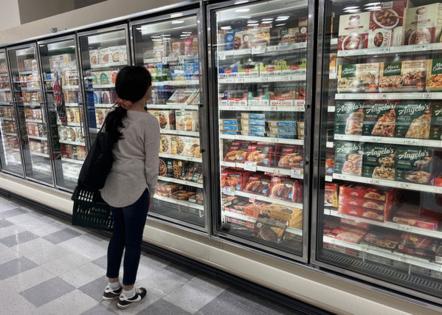Time to go vegetarian? Cost of chicken and ground beef hit record highs.
Published in Political News
If you’ve ever considered going vegetarian, now might be the time to make the jump to a meat-free diet.
Chicken and ground beef notched record-breaking prices in June, continuing their climb as feed and production costs rise along with demand. But while the cost of chicken has increased more steadily, beef prices have surged rapidly, jumping nearly 14% year-over-year, according to the latest data from the consumer price index.
Still, sticker shock isn’t confined to the supermarket aisle; many Americans are also seeing jaw-dropping energy bills. Last month, the average cost of electricity hit 19 cents per kilowatt-hour for the first time ever, and natural gas prices are the highest they’ve been in more than two years.
Those data points are reflected in the fact that inflation is rising across the board. Consumer prices are about 2.7% higher than they were in June last year, an increase economists largely attribute to President Donald Trump’s sweeping tariffs pushing costs skyward. And with higher import taxes on more than 20 counties set to take effect next month, it may not be the last time the price of consumer goods and services tips the scale.
The Tribune is tracking 11 everyday costs for Americans — eggs, milk, bread, bananas, oranges, tomatoes, chicken, ground beef, gasoline, electricity and natural gas — and how they are changing, or not, under the second Trump administration. This tracker is updated monthly using CPI data from the U.S. Bureau of Labor Statistics.
Eggs
Egg prices have dropped for a third month straight, falling another 17% month-over-month.
Now $3.78 for a dozen large Grade A eggs, June marked the first time the nationwide average registered below $4 since November 2024.
The decline in egg prices is likely due to a decrease in bird flu cases in commercial and backyard flocks since the start of the year. In the first two months of 2025, tens of million of birds were affected by highly pathogenic avian influenza across 39 states, according to U.S. Department of Agriculture data. As of June, the virus was detected in less than 350,000 U.S. birds, with those cases concentrated in only two states: Arizona and Idaho.
Currently, the cost of eggs is about 9% less than it was before Trump took office.
Milk
It’s not just poultry flocks and wild birds that have been affected by bird flu. According to the Centers for Disease Control and Prevention, the virus has been reported in dairy cows since March 2024. But like poultry cases, the number of newly infected dairy cows is dropping, with just two cases recorded last month.
As of June, a gallon of fresh, fortified whole milk would set you back about $4.03. That price is 7 cents lower than it was in the last month of the administration of President Joe Biden and up only 2% from a year ago.
Bread
Some good news for carb-lovers: The cost of bread is at a two-and-a-half-year low. As of June, white bread was priced at $1.86 per pound.
Bananas
The cost of bananas fell slightly from May’s all-time highs, dropping just a fraction of a cent to $0.65 per pound.
Inflated costs are likely a byproduct of Trump’s trade war. The United States relies on banana-growers like Guatemala, Ecuador, Costa Rica, Honduras and Mexico for billions of pounds of fruit, but currently, all are subject to an import tax of at least 10%.
Oranges
Orange prices went up 4% in June and likely will continue on this upward trend in the coming months. This, however, has little to do with any policies from the current administration.
Like many citrus fruits, the cost of oranges is heavily tied to the harvesting season. As we exit orange season, supplies will decrease, coinciding with an increase in demand, thus triggering higher prices. This is standard for the fruit market, with oranges cheapest in the winter months, then increasing in cost throughout the late spring and summer and eventually peaking in September or October each year.
Currently, the average price per pound for navel oranges is $1.63 nationwide.
Tomatoes
The cost of field-grown tomatoes is approximately $1.74 per pound. That price is 3 cents higher than the previous month and down roughly 16% since Trump took power.
This change, however, is largely due to the growing season. Like oranges, tomato prices vary depending on the time of year, rising in the fall, peaking in the early winter months and then plummeting in the spring.
But there may soon be movement outside the typical pricing seasonality. On Monday, the Trump administration announced it was placing a 17% tariff on Mexican-grown tomatoes, which make up the vast majority of all tomatoes eaten and sold in the U.S.
Still, as of June, prices were down nearly 6% from the same time last year.
Chicken
The average cost of fresh, whole chicken jumped 3 cents month-over-month, landing at an all-time high of $2.09 per pound.
So why the price spike? It could be a result of rising feed costs, the lingering effects of bird flu on the supply chain or that more drastic increases in beef prices are driving a shift in consumer demand toward cheaper meat options like chicken.
Ground Beef
Amid peak backyard barbecue season, ground beef prices are trending upward.
Now $6.10 per pound, the average price of 100% ground beef chuck hit record highs for the fifth consecutive month, surging roughly 11% since the start of the year.
The rising cost can be attributed to a confluence of factors. The U.S. cattle inventory is the lowest it’s been in almost 75 years, and severe drought in parts of the country has further reduced the feed supply, according to the U.S. Department of Agriculture.
Supply challenges and rising feed costs stateside means the country is importing more beef. But beef and cattle sourced from other nations isn’t necessarily a cheaper alternative. New tariff rates on top beef importers like Mexico, Canada and Brazil will take effect on Aug. 1, raising the countries’ already steep import taxes to 30%, 35% and 50%, respectively.
With increased costs both locally and abroad, this may not be the last time shoppers see record beef prices this year.
Electricity
At 19 cents per kilowatt-hour, the current price of electricity is the highest on record, going back more than 45 years.
Month-over-month changes in electric costs typically register at a fraction of a cent, with the difference from May to June about eight-tenths of a cent. But that doesn’t mean consumers won’t feel it in their pocketbooks. Last month’s fractional increase represents a 4.4% change, and according to ComEd, the primary electric utility in Chicago, the average price for residential customers was expected to go up $10.60 per month in June.
Nationally, electricity has already been at record prices since January, and with long, hot summer days ahead, most Americans won’t see lower rates on their bills anytime soon.
In an effort to mitigate rising costs, ComEd recently launched a $10 million relief fund for some low-income customers.
Gasoline
The cost of gasoline saw no change from May, remaining at $3.31 per gallon of regular unleaded in June.
Prices in Chicago tell a different story. At $3.50, the cost of gas in the city went up roughly 2.5% month-over-month and hovers around 20 cents higher than the national average, according to data from the U.S. Energy Information Administration.
Both locally and nationally, gasoline prices are up more than 5% under the Trump administration.
Natural Gas
The nationwide cost of piped utility gas, or natural gas, averages at $1.65 per therm.
That price is holding at a two-year high and is up nearly 9% since President Biden left office.
©2025 Chicago Tribune. Visit at chicagotribune.com. Distributed by Tribune Content Agency, LLC.

























































Comments